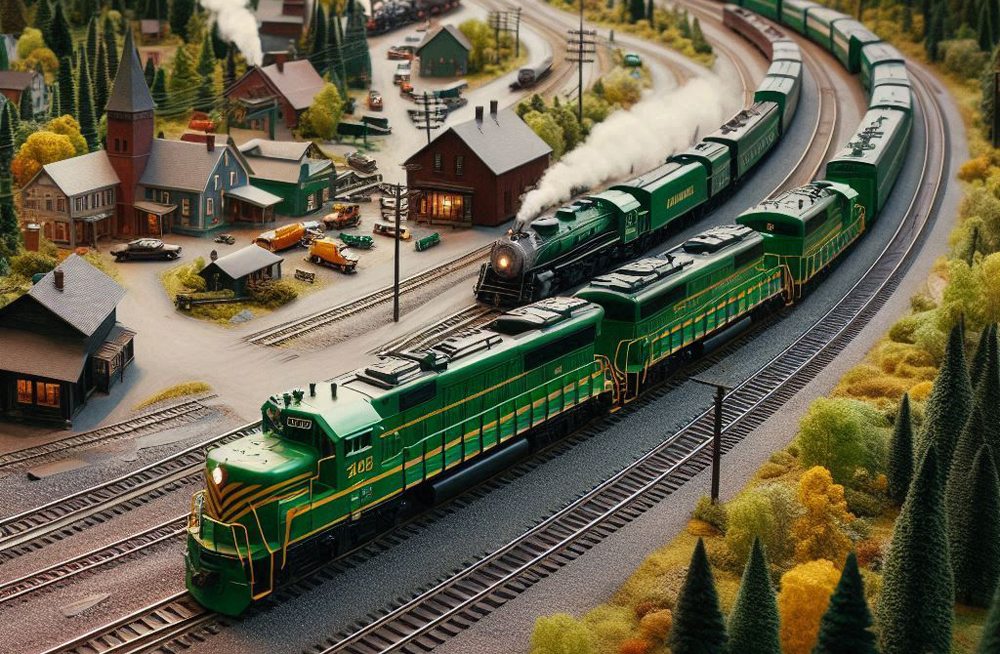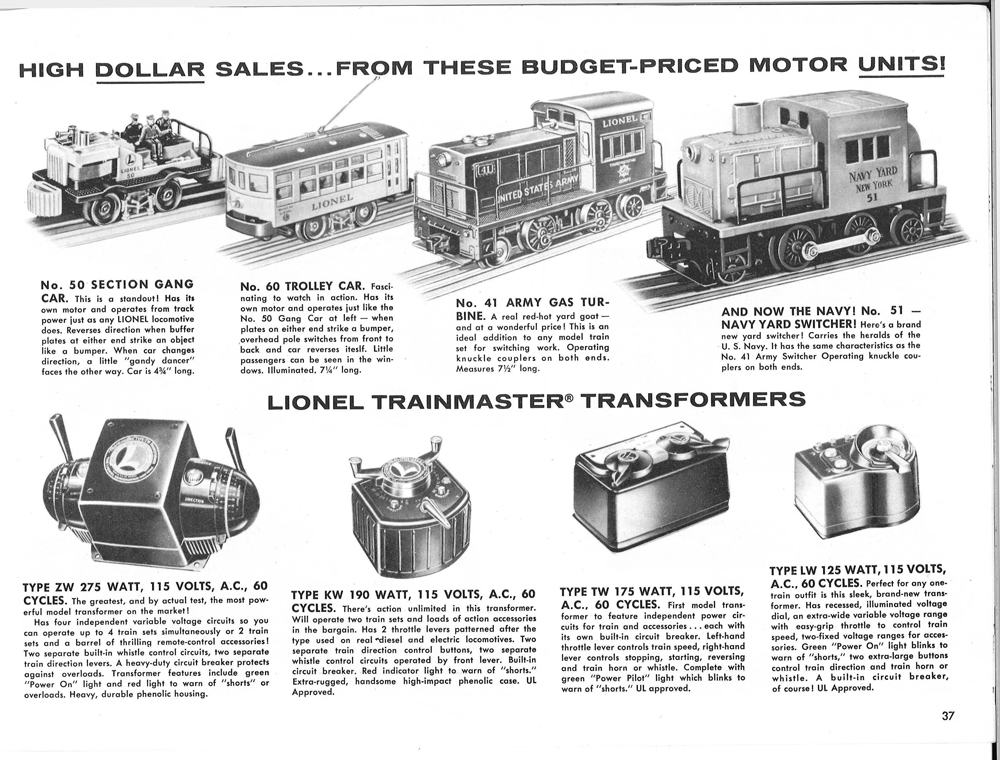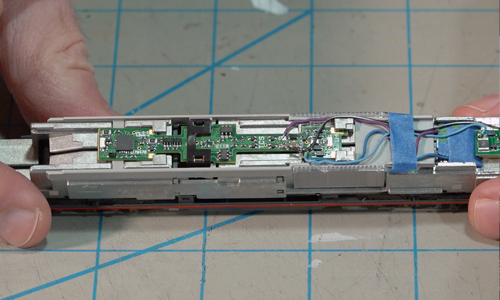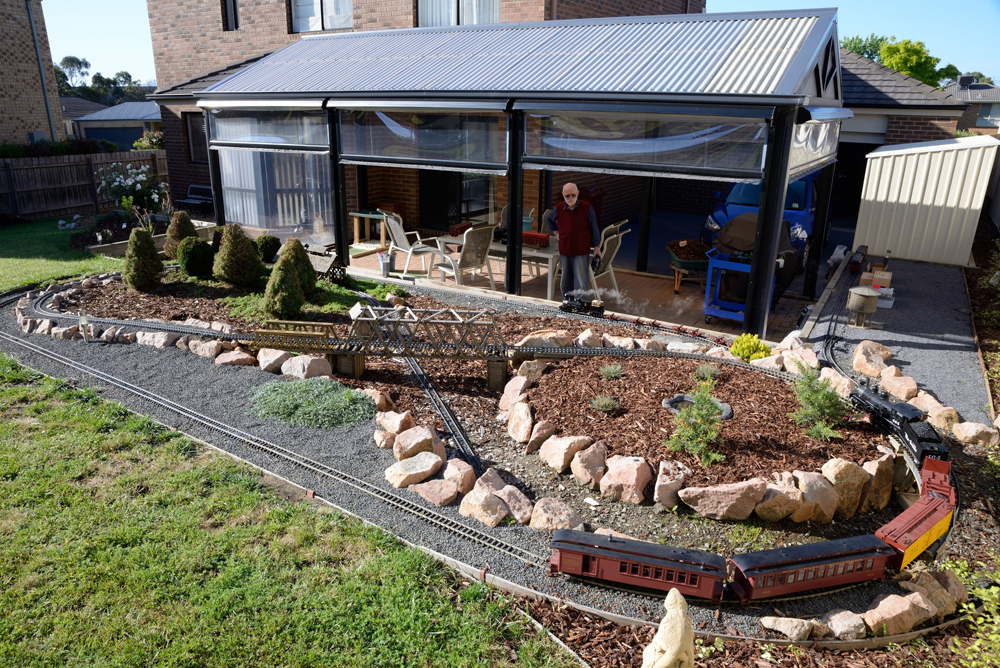What is ground foam for model railroad layouts? When I first came across this phrase, I thought it was foam that was to be used on the ground, that is, for dirt, grass, and weeds. Then I cottoned on – it’s foam that’s been ground up!
So, why would people grind up foam? Well, it does a good job of simulating grass, weeds, dirt, and leaves. To help the illusion along, it comes in different grades and a variety of colors. It’s important to remember the names of the colors don’t limit your uses. Something labeled “dirt” might also do a good job simulating seed pods on weeds, for instance.
Another thing to remember is that ground foam is just one of many parts of a realistic scene. Let’s look at some of the ways you can use ground foam on your layout.
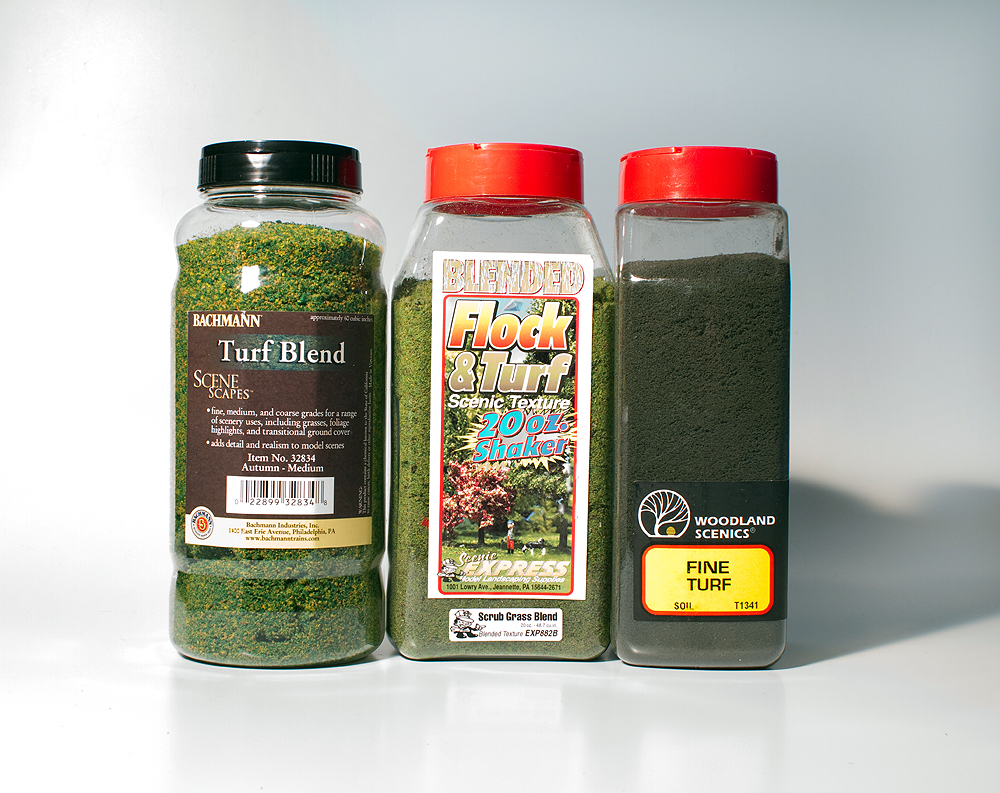
Ground foam as ground cover
For ground cover, fine and medium ground foam from manufacturers including Woodland Scenics and Scenic Express are a good first layer. In N scale, finely textured foam in a bright green color makes for a manicured lawn. If you have a residential neighborhood, this is what you’d want to start with. In HO or O scale, fine ground foam does a nice job of simulating bits of weeds along a path, or even mossy growth on a cliff face.
Coarse ground foam in N scale will appear more like abandoned lawns or fields, small bunches of weeds, or scrubby bushes. Be sure to use photos to help choose colors.
In both N and HO scales, coarse ground foam makes a good base to which you can add static grass to simulate wild fields. Sprinkles of fine foam in bright colors can create areas of wildflowers.
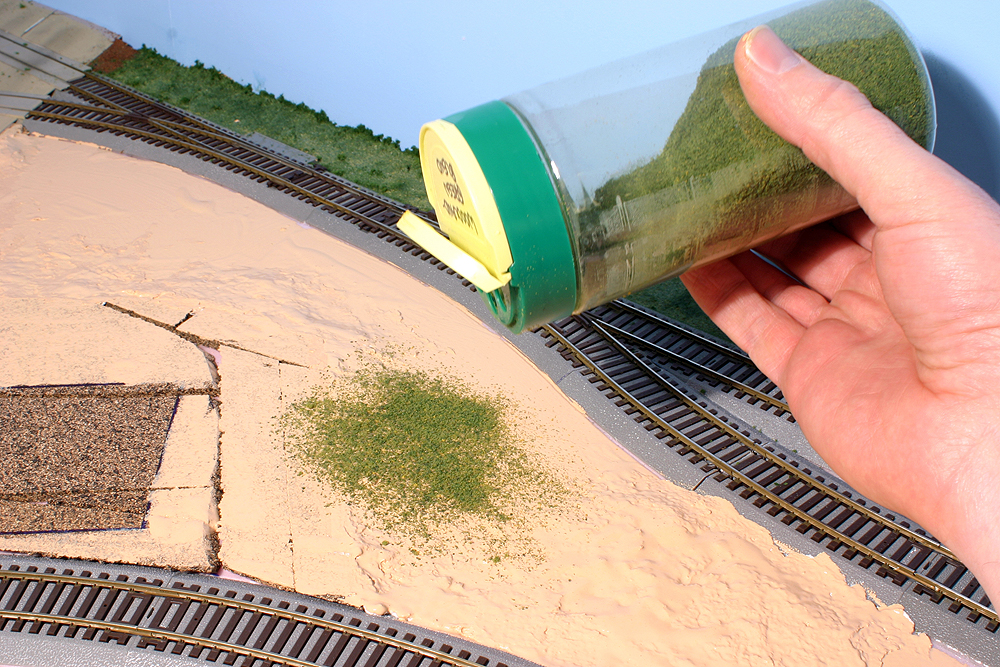
To adhere ground foam as ground cover, start by brushing white glue on the area you want to cover. Sprinkle the foam over the area. A kitchen strainer with an appropriate mesh screen to let the foam fall through will make it easier to get even coverage. Then, sprinkle a variety of colors (usually greens, but sometimes browns and tans, depending on what season and foliage you’re trying to model) and textures to keep it interesting. Keep adding layers of dry foam until you get the look you’re after. At this point, the upper layers will be loose.
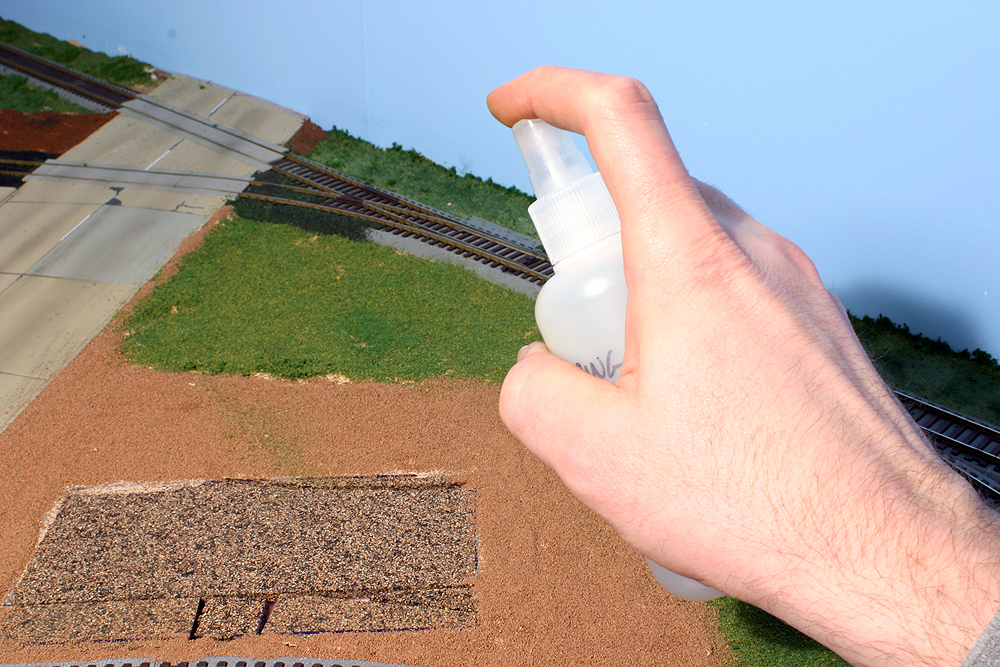
Fill a misting bottle with 70% isopropyl alcohol and wet the area. Spray gently so you don’t disturb your work.
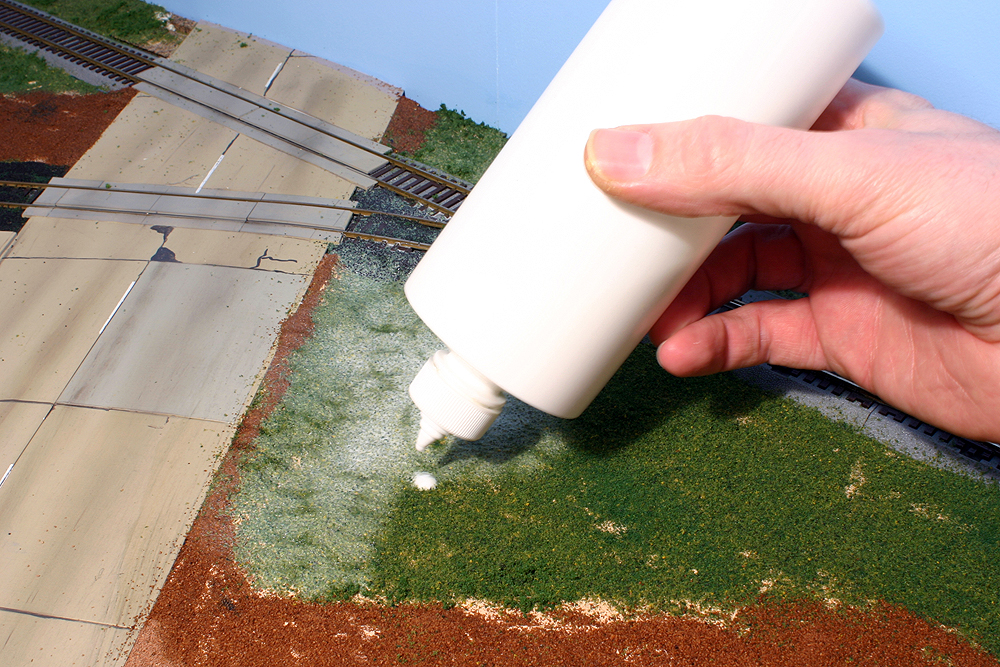
Once everything is wet, you can apply diluted white glue or scenery cement. For small areas, a pipette is a good tool to control where the glue is going. If it’s a larger area, a spray bottle is more efficient. Again, be careful not to disturb your work.
You now have a base layer of scenery on your layout!
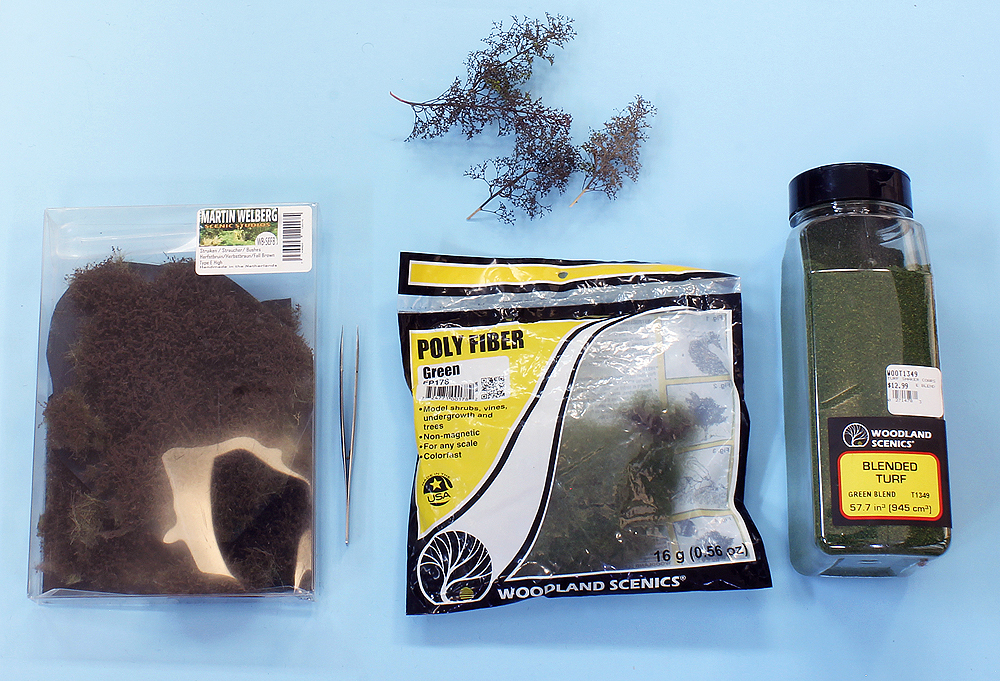
Ground foam as foliage
Ground foam can be used as foliage when making trees. There are kits that include tree trunks molded in bendable plastic and foam clumps to glue onto the branches. Ground foam in various textures can be added to this foam foliage to add color variation and depth. I’ve also used ground foam with Scenic Express SuperTrees, a type of dried wildflower that’s been dried and preserved, to create realistic looking wooded areas. With this method, an adhesive is applied to the tree armature, then the armature is either dunked into the ground foam foliage, or the foliage is sprinkled over the tree. See how we did it for our Freemont Mills project layout.
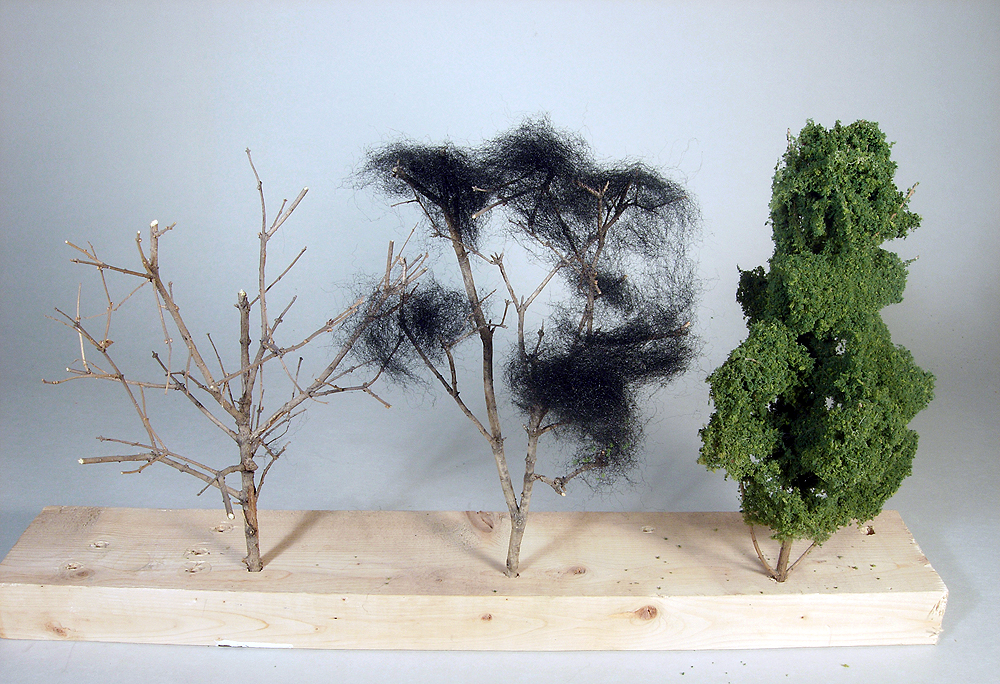
Ground foam foliage is also sold adhered to nets of fine fibers. These can be pulled and stretched over an armature to create wispy, lacy-looking trees. The fibers represent fine branches. Coarse ground foam can also be used with balls of poly fiber to make puffball trees.
Make your own ground foam
You can make your own ground foam if you like. It’s a bit messy, but if you have a cheap supply of foam rubber, you can put it in a blender with some water and paint or dye and grind it up. Let the material dry, then run it through a sieve to grade it into different sizes.
Ground foam is a basic part of the scenery took kit. Whether you buy ready-to-use materials or make them yourself, it’s a versatile product that will help get your layout beyond the “Plywood Pacific” stage. Have fun!






